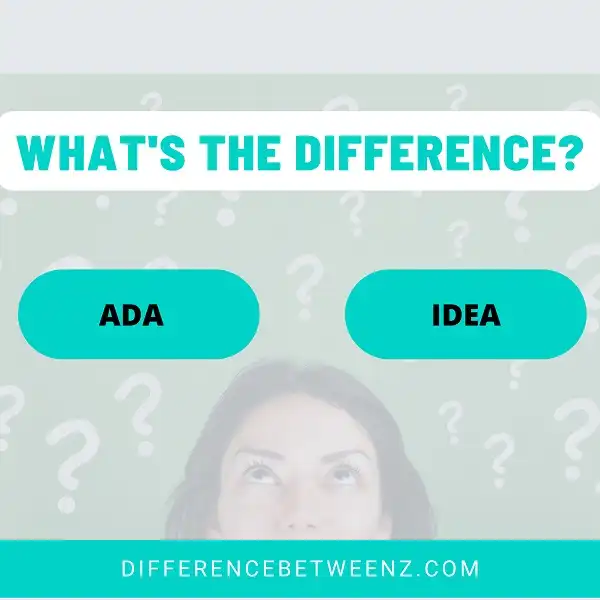The Individuals with Disabilities Education Act (IDEA) and the Americans with Disabilities Act (ADA) are both important pieces of legislation that protect the rights of individuals with disabilities. However, there are some key differences between these two laws. In this blog post, we will explore some of the key differences between IDEA and ADA, and discuss how they can impact students with disabilities. Stay tuned for more information!
What is ADA?
ADA stands for the Americans with Disabilities Act. The ADA is a civil rights law that was passed in 1990. It prohibits discrimination against people with disabilities in many areas, including employment, education, and access to public places.
- The ADA also requires that employers provide reasonable accommodations to employees with disabilities. ADA is an acronym that stands for the Americans with Disabilities Act.
- This law was passed in 1990 in order to provide civil rights protections to individuals with disabilities. The ADA prohibits discrimination in several areas, including employment, education, and public accommodations.
- It also requires employers to provide reasonable accommodations to employees with disabilities. Thanks to the ADA, people with disabilities have greater access to opportunities and resources.
What is IDEA?
IDEA stands for the Individuals with Disabilities Education Act. IDEA is a federal law that governs how states and public agencies provide early intervention, special education, and related services to children with disabilities. IDEA requires that eligible children with disabilities be provided with a free appropriate public education that meets their individual needs.
IDEA also provides for the early identification and evaluation of children with disabilities, as well as for the placement of children in the least restrictive environment. IDEA is part of the larger Education for All Handicapped Children Act of 1975 (Public Law 94-142), which was later amended by the Individuals with Disabilities Education Improvement Act of 2004 (Public Law 108-446).
Differences between ADA and IDEA
ADA and IDEA are two acronyms that are often used interchangeably, but there are actually some important differences between the two. ADA stands for the Americans with Disabilities Act, and it is a civil rights law that prohibits discrimination against individuals with disabilities in all areas of public life. IDEA, on the other hand, is the Individuals with Disabilities Education Act.
This federal law governs how states and public agencies provide special education and related services to children with disabilities. While ADA covers a broad range of rights and protections, IDEA is specifically focused on ensuring that disabled children have access to a free and appropriate public education. As a result, ADA and IDEA are both important laws that seek to protect and support individuals with disabilities, but they operate in different arenas.
Conclusion
The Individuals with Disabilities Education Act (IDEA) and the Americans with Disabilities Act (ADA) are both important pieces of legislation that protect the rights of individuals with disabilities. However, there are some key differences between these two laws. IDEA is specifically focused on ensuring that students with disabilities have access to free and appropriate education, while ADA covers a wider range of issues including employment, public accommodations, and transportation. It is important to understand the specific provisions of each law in order to ensure that your business is compliant.


